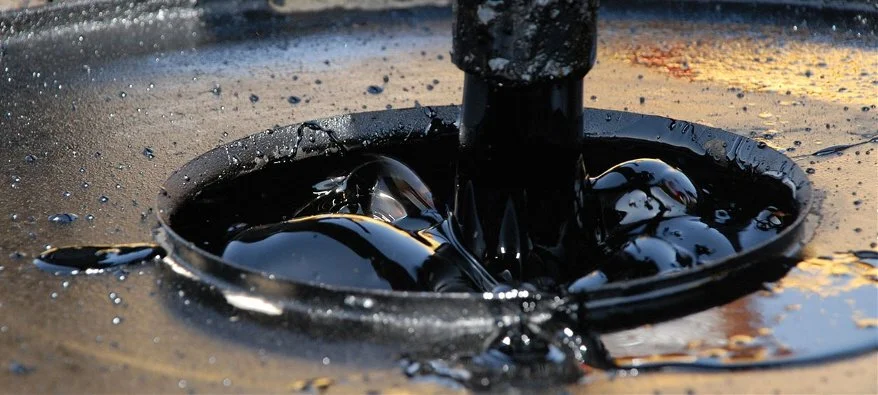
Bitumen Application and Uses
Table of Contents :
Asphalt : The Lifeline of Modern Infrastructure !
Shaping the World Around Us.
Part of Our Everyday Life.
Construction and Maintenance Application.
Asphalt : The Lifeline of Modern Infrastructure !
Bitumen plays a central role in modern infrastructure, particularly in the creation of asphalt, which is used in the vast majority of roads and streets worldwide. Asphalt roads are cost-effective, quick to construct, durable, and easy to maintain, making them more practical than alternative materials like concrete. Furthermore, asphalt helps reduce noise pollution, offers excellent performance in all weather conditions, and is 100% recyclable.
1) Asphalt Beyond the Surface :
Bitumen is not only used for the road surface itself, but also for the underlying structural layers of roads. The versatility of asphalt means it can be adapted to support various traffic loads and climatic conditions, whether for urban, rural, suburban roads, highways, bridges, or areas subject to extreme temperature variations like freezing and thawing.
Modern asphalt technology has even introduced colored and textured surfaces, which improve safety and visibility. These are used to mark bus lanes, bike paths, pedestrian zones, or school areas, and to warn drivers of dangerous turns, hidden intersections, or high-risk zones.
2) Efficiency in Construction and Maintenance :
Asphalt roads can be built rapidly and require no curing time, allowing immediate use after placement. This quick installation is especially valuable in urban areas, where roads may need to be frequently opened for maintenance of underground utilities. Asphalt surfaces can be easily removed and replaced, making them ideal for pothole repair, road resurfacing, and emergency works—with minimal disruption to traffic.
3) Durability and Longevity :
With proper design and maintenance, modern asphalt roads can last over 40 years. Roads are typically constructed in layers, with a strong base course and a replaceable surface layer (wearing course). This layered design ensures long-term structural integrity, resistance to environmental stress, and efficient performance under heavy traffic.
4) Enhanced Safety Features :
Asphalt surfaces are engineered to improve drainage, reduce surface water spray, and enhance skid resistance. These features minimize the risk of aquaplaning, improve braking performance, and ensure better visibility of road markings in wet conditions. High-grip asphalt is often used in high-risk areas such as roundabouts, junctions, and slip roads to maximize safety.
5) Noise Reduction Benefits :
One of the major advantages of asphalt is its ability to reduce noise, both inside and outside vehicles. Standard asphalt surfaces are among the quietest road materials, and the development of porous and silent asphalt has further improved acoustic performance. Compared to concrete, traditional asphalt surfaces generate up to 50% less noise, and porous asphalt can reduce noise levels by an additional 50%.
6) Sustainability and Recycling :
Asphalt is 100% recyclable and reusable, making it an environmentally friendly choice. Reclaimed asphalt pavement (RAP) is routinely mixed with new materials to build new roads, helping conserve natural resources, reduce landfill use, and lower construction costs and emissions. Recycling also minimizes the demand for virgin aggregates, further enhancing sustainability.
Part of Our Everyday Life :
Bitumen is an organic, versatile, and recyclable material that is deeply embedded in modern life—often in ways we don’t immediately notice. While most people associate bitumen with asphalt roads and roofing, its waterproofing, adhesive, and load-bearing properties make it essential in a wide range of everyday applications.
1) A Material That Goes Beyond Roads and Roofs :
Thanks to its durability and weather resistance, bitumen is widely used in environments where strength and protection are critical. Its ability to bond and seal makes it an ideal material for all-weather infrastructure, as well as for products exposed to harsh conditions.
In the automotive industry, bitumen membranes are frequently used as soundproofing panels, helping reduce vibration and noise inside vehicles. It is also found in lubricants, sealants, and preservatives, contributing to the performance of products across many industrial sectors.
2) On the Farm and in Industry :
Modern agriculture relies on bitumen in multiple forms. Bituminous paints and disinfectants are applied to various farm surfaces, and waterproofing solutions are used to protect concrete tanks, vats, and feeding platforms. Bitumen paving is often used for barn floors and exterior walkways due to its strength and resistance to wear.
In industrial settings, bitumen is present in a wide array of greases and lubricants, whether in heavy machinery, earth-moving equipment, or gearboxes. It is also used in corrosion-resistant coatings, printing inks, and protective treatments.
3) Bitumen in Recreational and Everyday Environments :
Bitumen is present in spaces built for sport, leisure, and daily life. It paves smooth cycling paths, rugged hiking trails, and even the rubberized surfaces of running tracks. It is used to waterproof swimming pools, treat outdoor clothing, and coat tennis courts, playgrounds, and stadiums.
4) A Pillar of Construction :
Thanks to its adhesive and cohesive properties, bitumen is a cornerstone of construction materials. When heated, it becomes viscous, allowing it to bind aggregates in asphalt; once cooled, it becomes solid and durable, forming a strong pavement structure. Most refined bitumen is specifically produced to meet the demands of the paving and roofing sectors, either through refining processes or custom blending.
5) Global Usage and Market Share :
Bitumen is a major component of global infrastructure. Current estimates suggest that approximately 102 million tons of bitumen are used each year worldwide. Of this, about 85% is used as a binder in asphalt for road construction, making it a key enabler of mobility, trade, and connectivity on a global scale.
Shaping the World Around Us :
Bitumen is a material that empowers architects, engineers, and urban planners to shape modern infrastructure with greater freedom and reliability. Its unique physical properties—notably flexibility, water resistance, and adhesion—make it an ideal solution for a wide range of construction and civil engineering applications.
1) Waterproofing and Structural Protection :
Bitumen membranes are highly water-repellent and remain flexible over time, making them particularly effective for roofing systems and structural waterproofing. Their natural adhesive quality allows them to bond to a wide variety of substrates, while their flexibility helps prevent cracks, rips, or tears, even under significant structural movement.
These membranes retain their performance for extended periods, contributing significantly to the durability and lifespan of buildings. In most standard applications, bituminous membranes can be expected to last 25 to 30 years, proving their long-term reliability.
2) Bitumen in Modern Architecture :
In today’s buildings, bitumen-based products are present in roofs, floors, ceilings, and walls, providing essential protection against moisture infiltration while enhancing structural performance. Traditionally used on low-slope roofs, bituminous membranes are now being repurposed in sustainable architecture, including green roofs, eco-roofs, and carbon-neutral construction—in both residential and commercial settings.
3) Civil Engineering Applications :
In large-scale civil engineering projects—such as bridges, tunnels, airport runways, and parking aprons—surface quality is critical. Bitumen-based surfaces are designed to endure heavy traffic loads, extreme temperature fluctuations, harsh weather, and even aggressive de-icing chemicals. Their resilience ensures long-term safety, functionality, and low maintenance.
4) Sealing and Containment :
Asphalt concrete with a void content of 3% or less is completely watertight, making it suitable for sealing structures, basins, and containers intended to hold water or liquids. Bitumen is commonly used to waterproof dams, reservoirs, landfill sites, and flood protection basins, providing reliable containment in critical infrastructure.
Bitumen is applied in construction and maintenance of :
-
• Disinfectants
• Fence post coating,
• Mulches,
• Mulching paper Paved barn floors, barnyards, feed platforms
• Protecting tanks, vats
• Protection for concrete structures
• Tree paints (protective)
• Water And Moisture Barriers (Above And Below Ground)
• Wind And Water Erosion Control
• Weather Modification Areas -
• Water & moisture barriers (above and below ground)
• Floor compositions, tiles, coverings
• Insulating fabrics, papers
• Step treads
• Building papers
• Caulking compounds
• Cement waterproofing compounds
• Glass wool compositions
• Insulating fabrics, felts, papers
• Joint filler compounds
• Laminated roofing shingles
• Liquid roof coatings
• Plastic cements
• Shingles
• Acoustical blocks, compositions, felts
• Bricks
• Dampproofing coatings, compositions
• Insulating board, fabrics, felts, paper
• Masonry coatings
• Plasterboards
• Putty
• Soundproofing
• Stucco base
• Wallboard
• Air-drying paints, varnishes
• Artificial timber
• Ebonised timber
• Insulating paints
• Plumbing, pipes
• Treated awnings
• Canal linings, sealants -
• Catchment areas, basins
• Dam groutings
• Dam linings, protection
• Dyke protection
• Ditch linings
• Drainage gutters, structures
• Embankment protection
• Groynes
• Jetties
• Levee protection
• Mattresses for levee & bank protection
• Membrane linings, waterproofing
• Reservoir linings
• Revetments
• Sand dune stabilization
• Sewage lagoons, oxidation ponds
• Swimming pools
• Waste ponds
• Water barriers
• Backed felts -
• Conduit insulation, lamination
• Insulating boards
• Paint compositions
• Papers
• Pipe wrapping
• Insulating felts
• Panelboards
• Underseal
• Battery boxes, carbons
• Electrical insulating compounds, papers, tapes, wire coatings
• Junction box compound
• Moulded conduits
• Black grease
• Buffing compounds
• Cable splicing compound
• Embalming
• Etching compositions
• Extenders
• Explosives
• Lap cement
• Plasticisers
• Preservatives
• Printing inks
• Well drilling fluid
• Armored bituminised fabrics
• Burlap impregnation
• Mildew prevention
• Sawdust, cork, asphalt composition
• Acid-proof enamels, mastics, varnishes
• Acid-resistant coatings
• Air-drying paints, varnishes
• Anti-corrosive & anti-fouling paints
• Antioxidants & solvents
• Base for solvent compositions
• Baking & heat resistant enamels
• Boat deck sealing compound
• Lacquers japans
• Marine enamels
• Blasting fuses
• Briquette binders
• Burial vaults
• Casting moulds
• Clay articles
• Clay pigeons
• Expansion joints
• Flower pots
• Foundry cores
• Friction tape
• Gaskets
• Mirror backing
• Rubber molded compositions
• Shoe fillers, soles -
• Airport runways, taxiways, aprons
• Asphalt blocks
• Brick fillers
• Bridge deck, surfacing
• Crack fillers
• Floors for buildings, warehouses, garages
• Highways, roads, streets, shoulders
• Kerbs, gutters, drainage ditches
• Parking lots, driveways
• Portland cement concrete underseal
• Roof-deck parking
• Pavements, footpaths
• Soil stabilization -
• Ballast treatment
• Dust laying
• Paved ballast, sub-ballast
• Paved crossings, freight yards, station platforms -
• Dance pavilions
• Drive-in movies
• Gymnasiums, sport arenas
• Playgrounds, school yards
• Race tracks
• Running tracks
• Skating rinks
• Swimming & wading pools
• Tennis courts, handball courts
• Synthetic playing fields & running track surfaces
